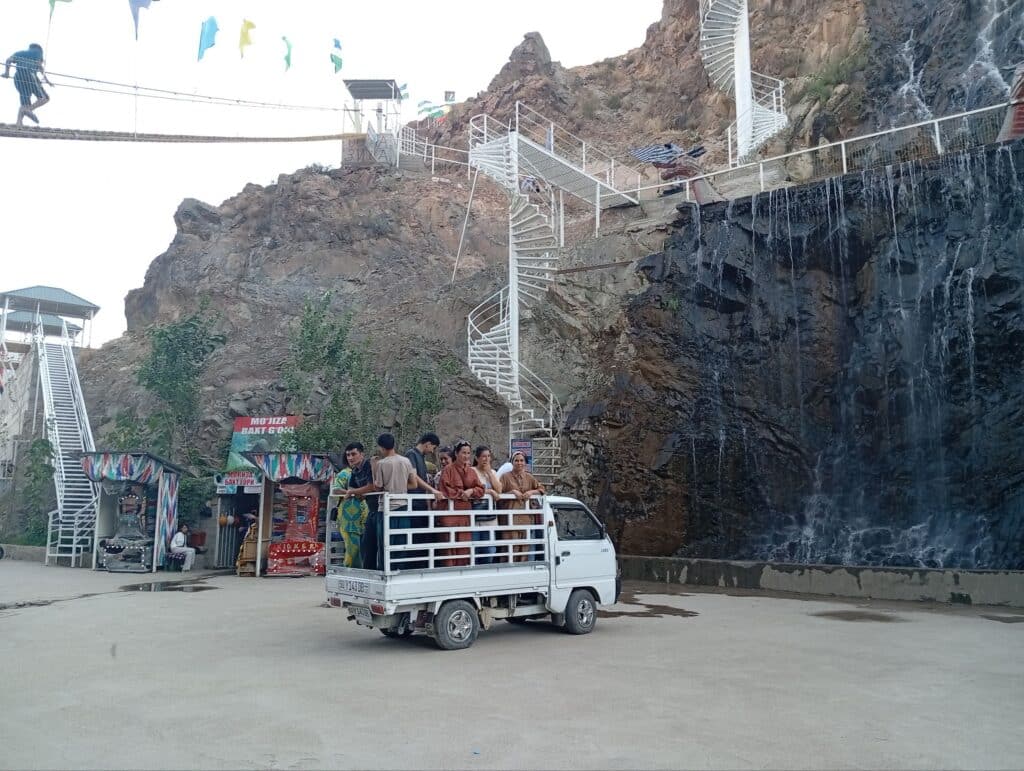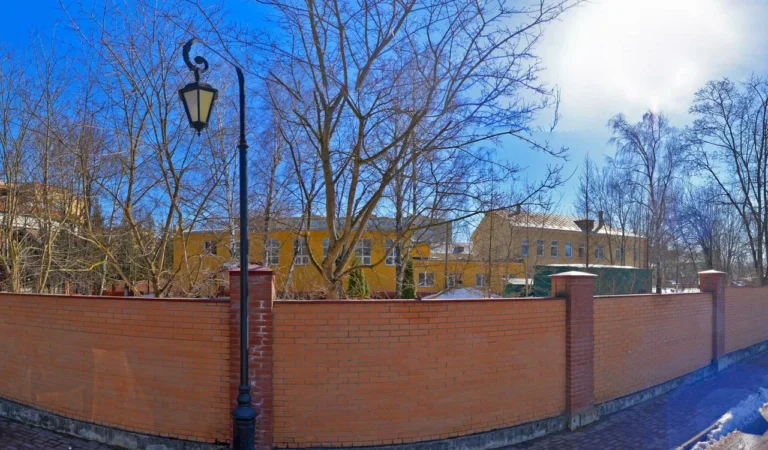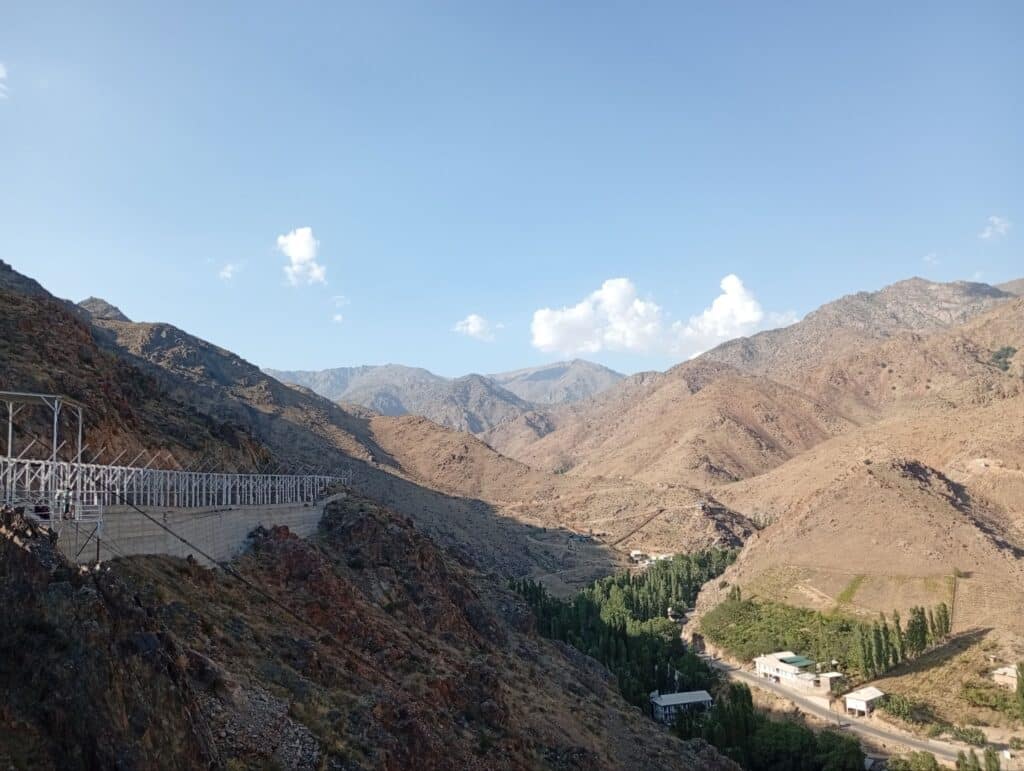
Morning in Chartak smells of fresh mineral water, while evening in Chadak carries the scent of campfire smoke and the sound of the dutar. By day, you can soar over the gorge on a zipline, and at sunset, sip kumis while watching the mountains slowly darken. In Nanay, visitors are welcomed with bread and salt, treated to mountain qurut, and told legends about mysterious springs. Namangan region is a place where every day turns into a story worth taking home.
Chartak – water that washes away fatigue
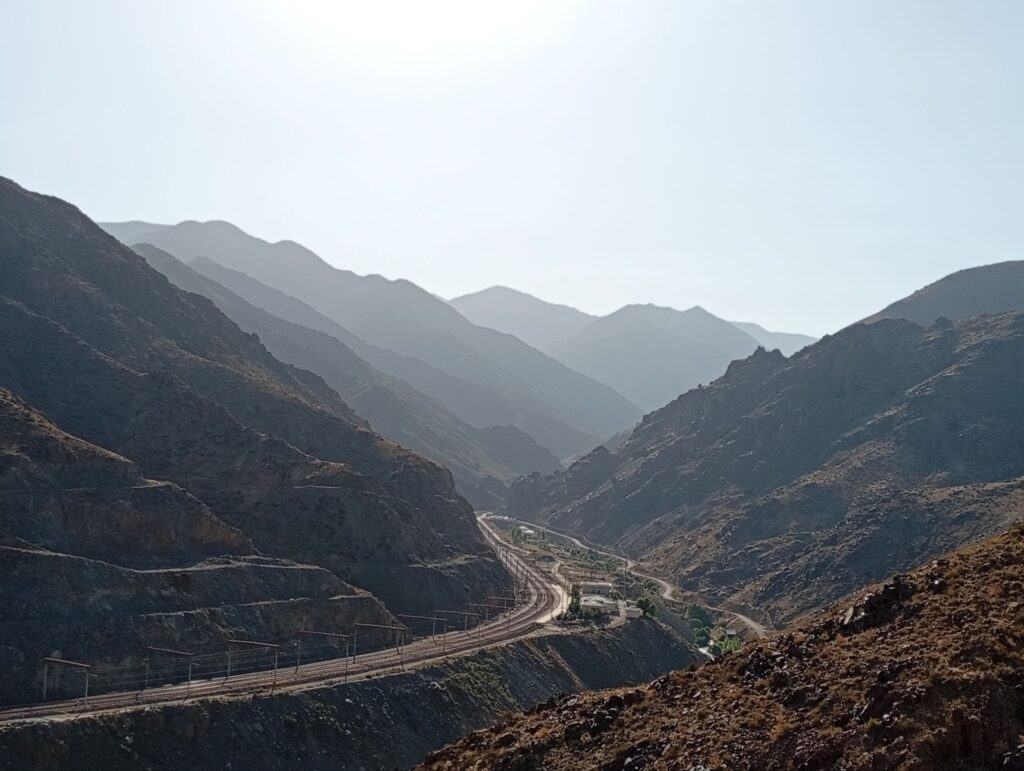
Just half an hour from Namangan and you are in Chartak, at the foot of the mountains. The air here smells of pine and mineral water which, according to local legend, washes away tiredness and restores strength.
Once, caravans from the Great Silk Road would stop here to rest before continuing their journey. Today, travellers come for the same feeling – only instead of camels outside guesthouse windows, there are now cars with licence plates from all over Uzbekistan.
Chartak is famous for its healing springs and its namesake water, cherished by locals and tourists alike. But water is not its only treasure. Here lies the complex of Sultan Uwais Qarani – a revered companion of the Prophet Muhammad.
According to tradition, he lived and preached in Namangan, and during the Battle of Siffin fought on the side of Imam Ali against Muawiyah. The warrior was called a shahid – a martyr for the faith.
In Chartak, you can see his mausoleum and the resting place of his mother. This is a serene, reverent corner that attracts both pilgrims and those seeking inner peace.
He lived and spread Islamic teachings in Namangan.
Chadak – the mountain people’s home
Chadak greets you with the whisper of mountain streams and the murmur of the Chodaksu River, which divides the village into picturesque quarters. Time slips away easily here: mornings with tea on a carved wooden aiwan, afternoons wandering among the hills, and evenings with impromptu concerts.
Guesthouses welcome weary travellers with carved wooden columns, handmade carpets, and clay ovens where fragrant dishes are slow-cooked.
As the sun sinks and the cool mountain air descends, hosts gather guests, take up dutars and rubabs, and under the soft music tell tales of the nomadic tribes that once came down from the mountains to found Chadak.
At the foot of the hills run clear streams, the most famous of which springs in the heart of the village – the Chir-Chir Momo sanctuary. From a large boulder entwined with ivy, an icy trickle of water flows. Visitors from across Uzbekistan and abroad come here to sip straight from the stone and taste the water of this mysterious source.
According to legend, Ismail Atai, having set out from the city of Sayram, fought enemies at the foot of Mount Oktov near Arashanbulok. In the heat of battle, twelve arrows struck him and he fell from his horse. Riding beside him was his sister, disguised in warrior’s clothing. Seeing her wounded brother, she could not hold back her tears.
Following the advice of local shepherds, Ismail bathed in the waters of the Arashanbulok spring, and within a week, he had completely recovered. But on the road to the Shunavoz area near Chadak, his sister died. Ismail buried her atop a hill at the entrance to the Chir-Chir cave, where locals believe water has flowed endlessly from the rock ever since.
For thrill-seekers
Chadak’s main natural pride is its five waterfalls, each with its own character. The tallest impresses with its scale: water crashes down in cascades, and its roar can be heard long before you see it.
Above it lies a glass observation deck. Standing on the transparent floor, you feel the torrent boiling below and mountains stretching skyward all around. At first, it feels like the ground has disappeared beneath your feet.
Those who crave heights will also find adventure here: suspension bridges and cableways span about 160 metres above the ground, leading to viewing points.
Chadak’s zipline is a true test for those ready to face the heights. The carabiner clicks shut, there’s emptiness beneath your feet, your hands tremble slightly… and then – a sudden surge forward. Wind whistles in your ears, mountains flash past, and below yawns a deep drop. In seconds, fear turns into exhilaration, and many rush back to the start to fly again.
For a quieter moment, visit a cave more than 42 metres deep. Inside, it’s cool, and thin streams of water run down the stone walls. Here, you can pause, touch the damp rock, and listen to the drip of water – a sound that makes time seem to stand still.
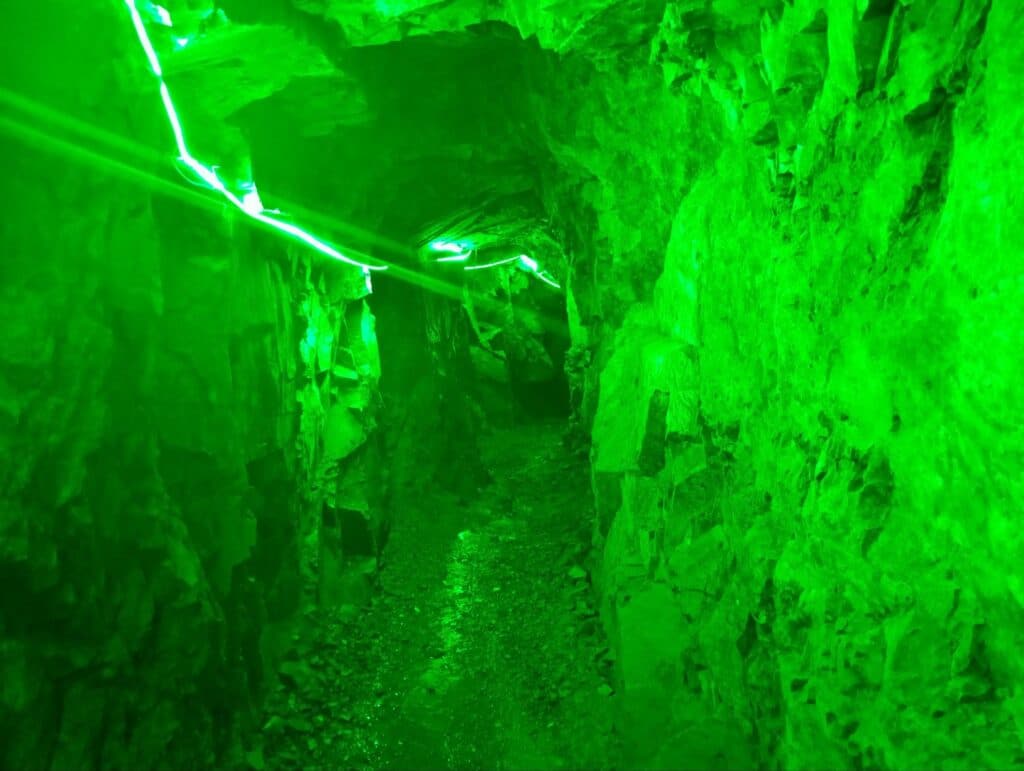
This cave is considered a place of spiritual strength, and locals believe its water brings luck and wards off misfortune.
Nanay – the taste of the mountains and the hush of the border
Forty kilometres from Namangan, at the very foothills of the Fergana Valley, lies Nanay. The village sits right on the state border, surrounded on all sides by Kyrgyzstan. Only a narrow road through Uzbek territory leads here – without it, Nanay would be an enclave.
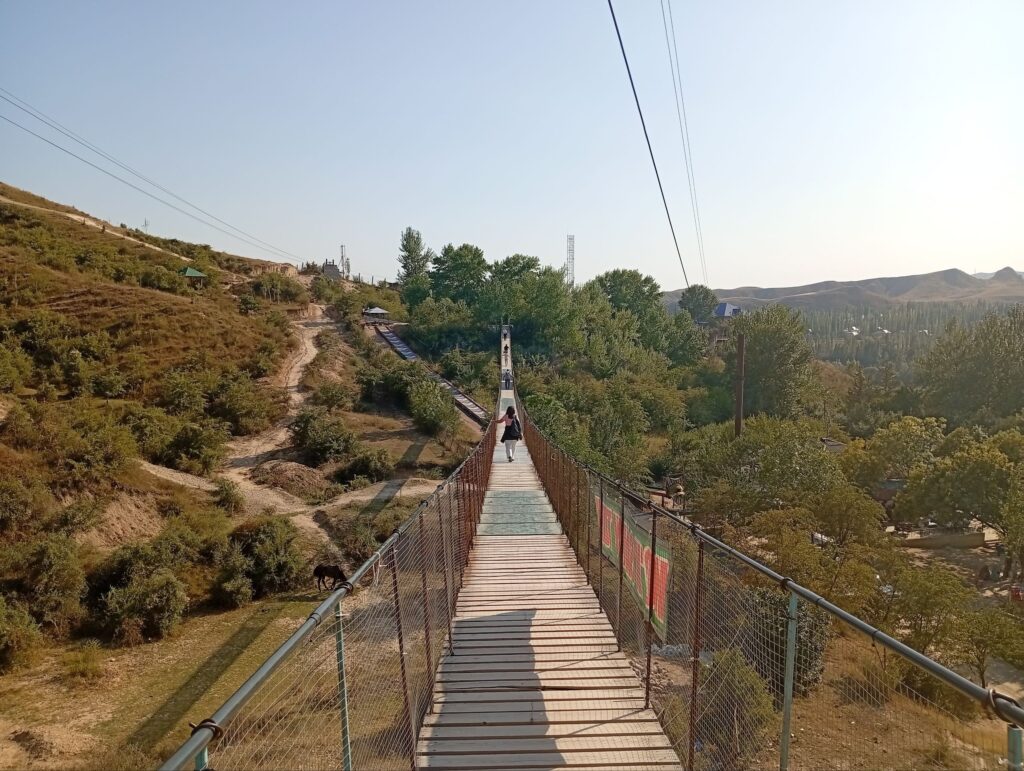
The road winds between hills, opening up mountain views as you approach. There are also cableways and ziplines here, but most visitors come for something else – to see an authentic Uzbek village.
On a slope overlooking the mountains, you can have a picnic and try kumis, made by locals themselves or bought from neighbours in Kyrgyzstan.
Uzbek kumis is usually fresh, while Kyrgyz kumis ferments slightly during the journey, gaining a light tang. For those who love that flavour, the Kyrgyz version is the one to choose.
Another local pride is mountain qurut. Made from kefir, it’s poured into cloth bags, hung in a cool place, and left to drain. The thick curd is then rolled into small balls.
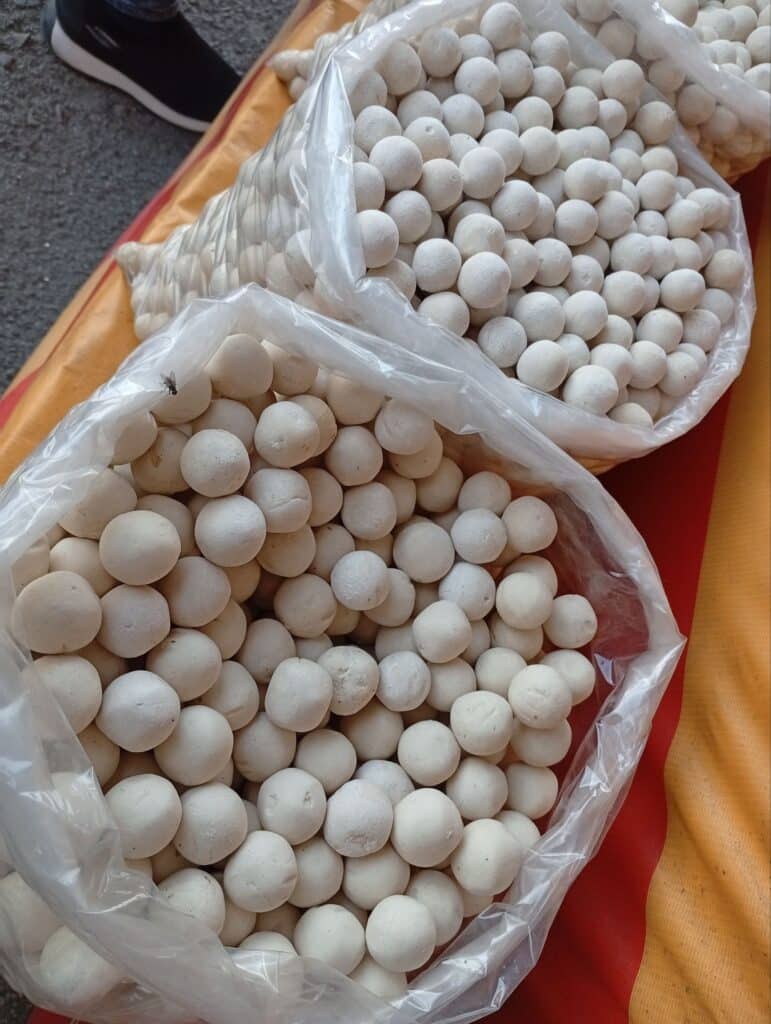
The cool mountain air gives qurut here a particularly rich taste.
How to reach Namangan’s tourist spots
From Tashkent to Namangan, you can travel by car (about 4–5 hours), bus, train, or domestic flight.
The Uzbekistan train reaches the Pap district of Namangan region in 3 hours 40 minutes, with tickets around 150,000 soums ($12). A SilkAvia plane ticket costs 277,000 soums ($22).
From Namangan, shared taxis to Chadak and Nanay cost about 40,000 soums ($3.2), while buses are 5,000–10,000 soums ($0.4-$0.8). Cars will take you to the foot of the hills, after which you walk or arrange for locals to drive you in “Labo”s or «miracle trucks» – you’ll see their photos below.

In Chadak, there are guesthouses and small hotels in the national style. In Nanay, authentic tourist homes offer accommodation with meals included.
